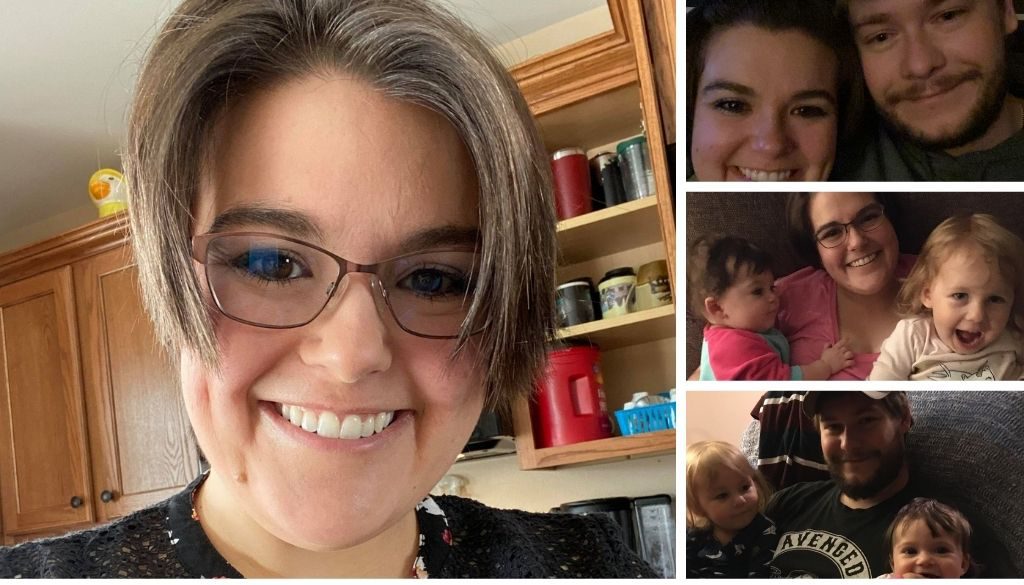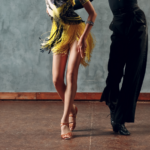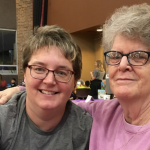Brystal Kondratuk – Hello From South Dakota
This week, we get to hear from Brystal Kondratuk. Brystal is a recent, but welcome addition to our support group. Check out her story!

Hello from South Dakota! My name is Brystal Kondratuk. I am 28 years old and have cerebellar ataxia, type unknown. I would like to share with you a little bit about what my journey with ataxia looks like, thus far. Although this diagnosis has been a struggle, it has presented me with many opportunities to grow. Whether or not I am using these opportunities to their full potential, is yet to be determined, but with absolute confidence, I can say that opportunities exist.
Growing up, things were normal. In early childhood, I hit developmental milestones as I should. I was in dance and gymnastics, then eventually participated in tee-ball. In grade school, I played volleyball and basketball. I played piano and sang in school choirs. By high school, I ran up and down the field with the football team, acting as one of the team’s managers; while simultaneously working hard as a Certified Nursing Assistant after school or on the weekends. I used to ride my bike around the lake near my parent’s house, sometimes more than once a day. After high school, I traveled across the country as a missionary on a team of 12 people. Daily, we would pack into our van, travel hundreds of miles, and stay with different host families.
It was during my time on the road as a missionary that I started to have symptoms. I did not yet know what was happening. I can recall a small number of instances where I found myself acting more clumsy than usual, but not enough to raise a red flag. After 10 months on the road as a missionary, other symptoms started to surface. I was starting to see myself lose balance and my handwriting, which had always been beautiful, was looking more and more like chicken scratch. My parents started to notice my clumsiness. They asked about my drinking habits, which have never been anything of concern.
All things considered, I continued carrying on with everyday life. I was due for a routine physical, which was not urgent. Although we didn’t feel that our observations of my clumsiness were a huge deal, my parents and I wanted to make sure that they were addressed. My doctor watched me walk and write. After watching me struggle to walk a straight line, she felt that it was necessary to order an MRI. The results showed severe cerebellar atrophy-80% of my cerebellum was gone. This of course raised a red flag and I agreed to a two-week suspension from work and driving until I had a follow-up with a Neurologist. At the time, I was working as a CNA putting on at least 10,000 steps or more per shift.
At my first appointment with the Neurologist, he told me that he had a chance to review my medical history and had seen my MRI. He was alarmed and “expected to meet someone in a wheelchair” based on what he’d seen. This goes to show how incredible and adaptable the human brain is! Clearly, what he was expecting was not the case! My first appointment consisted of neuro assessments, a follow-up MRI, and some lab work. He diagnosed me with cerebellar ataxia and suspected that it was congenital. He thought that it would be worth seeing a Neurologist who specialized in ataxia, as it is so rare.
Soon after my visit where I received this diagnosis, I traveled to see a Neurologist at the University of Minnesota Ataxia Clinic. In working with this new Neurologist, I was given the option of having genetic testing done. Insurance, however, was not willing to cover any portion of the genetic testing cost which at the time was in the multiple thousands of dollars. I opted to forego genetic testing at the time, keeping in mind that I could revisit the idea down the road. Fast forward to today, November 21st, 2020; I am still working with the same Neurologist and am currently scheduled for an appointment to talk to a genetic counselor.
Currently, I am going to physical therapy for 1 hour every week. This has been one of the best things that I have done for my ataxia. Setting aside time each week to concentrate on maintaining my best self is satisfying. It has improved my physical and mental well-being.
I went on to get married and am the mother of two beautiful daughters. There are a lot of “what ifs” that come with ataxia, but trusting in the Lord helps me to accept what life is like. Life is too short to live in fear. Although being a young mom with ataxia is as difficult as you would expect some days, I wouldn’t change a thing. I am no pro at being positive, but it is something that I am constantly practicing. I have been blessed with a support system like no other. My family and friends strive to always extend their help to “my little family fun unit”. My loving husband, gorgeous girls, and I couldn’t ask for such selfless help. Praise be to God that I am presented opportunities to practice virtue, and in turn, be God’s tool to offer others extensions of the same opportunities.
There are many lessons that I feel like I have learned from my experiences, but one in particular grabs my attention quite often. Do not judge others as you never know what others may be dealing with. Ataxia is a pretty “invisible” disease; not everything that someone with ataxia has is visible. This applies to everyone else, ataxians or otherwise. That “lazy neighbor” whose yard you may think looks dead could be owned by someone who is suffering from illness; maybe that crabby store clerk just lost a loved one; maybe the cashier at Walmart had to be up all night with their sick child. You never know what another person may be dealing with. Join me in trying to not be too quick to judge. Thank you for taking the time to read about my journey. God bless you, never give up. Merry Christmas!

Thanks for sharing your lovely story, Brystal Kondratuk!
Please consider sharing your story – whether you have Ataxia, are a caregiver, friend, or relative. You may fill out the form below to get started.




